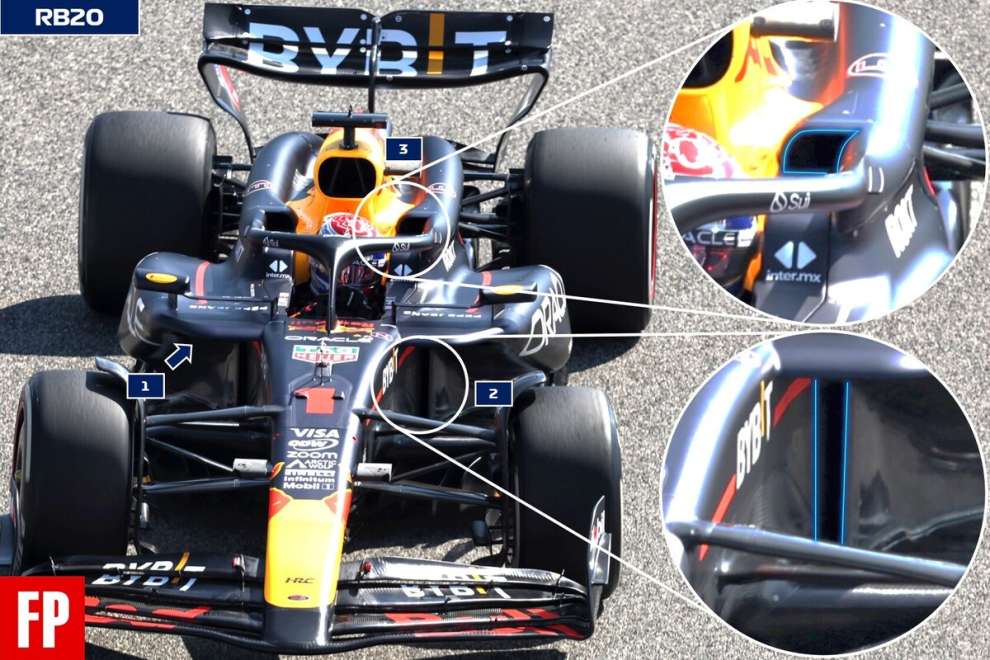Red Bull in front, Ferrari second in strength. These are the impressions that emerge from the three days of testing in Bahrain. It will be up to the first Grand Prix to disprove this verdict or to quantify the actual gaps between the parties on the field, with the awareness that the balance of power will change from track to track. The signals are for one Red Bull-Verstappen couple which remains the point of referencebut Ferrari and the other pursuers hope to ignite the championship over the long distance.
Ferrari, another scenario
The most important news for the Cavallino is that the newborn SF-24 behaves as expected, moving away the 2023 scenario, when in Maranello the priority had once again become “we need to understand”. The Ferrari at the beginning of 2023 was not only less performing than the Red Bull, but it was incomprehensible, unpredictable and inconsistent to the point of not allowing us to understand its exact problems. All this deprived the team of references on where to intervene, effectively blocking development.
The big limit for Ferrari last season was the inability to work to add load and aerodynamic efficiency to the car, the basic ingredients of performance. First of all in Maranello it was necessary to trace the origin of the problems, through a complex analysis of the structure of the flows under the surface. The big updates in 2023 were not the bellies or the new funds coming to the machine, but the correction of the simulation techniques, highlighting those specific aspects of ground effect physics on which the current regulations are based.
SF-24, a home base
The second part of the work in 2023 was instead dedicated to making the SF-23 a more benign car, improving its driveability. Aspects that have definitively materialized on the SF-24, already appreciated by Leclerc on the microphones of Sky Sport F1: “This year we have a better feeling with the car. The balance is quite constant, it is therefore much easier to develop on this basis”. Development is the main hope for the Cavallino.
An eloquent clue to the leap forward of the Red is the docility of driving shown on the second day of tests, particularly conditioned by that wind to which the SF-23 was all too sensitive. The wind is in fact an amplifier of the yaw angle, exposing the surface more to the turbulence of the front wheels. Their management has proven to be particularly complicated with the current cars, which do not have those appendages in the center of the car which until 2021 shielded the bottom from external agents.
The lower wind sensitivity tells of an SF-24 whose bottom is now better protected from turbulence external and is therefore put in a position to work as best as possible and consistently. The general impression is that Ferrari has regained control of what happens on its car, without having to dedicate resources to “understanding” anymore. The Red starts with a gap to fill, but in Maranello we can go back to developing to improve load and aerodynamic efficiency, with the prerequisites to keep up with a Red Bull which certainly won't be left behind in terms of updates.
Collective satisfaction
Ferrari finds a car that responds to predictions, considerations that can also be extended to other pursuers. Mercedes was another of the lost teams last season, often struggling with an unstable car at the rear and too narrow an operating window. According to Hamilton's words, this is not the case with the W15, which puts the Brackley team in a position to implement aggressive development: “We have clearly improved the car this year and it is much more pleasant to drive. […] We have some progress to make, but this is a good foundation to build on”.

Similar situation also at McLaren. There were simply too many test variables to quantify Woking's delay from the top, but the MCL60 showed no surprises, showing itself open to receiving developments. “The machine behaves as expected”, the painting by Andrea Stella. “It is a good basis for development”. McLaren also expects to soon have important mechanical and aerodynamic innovations, resulting from projects that were still incomplete at the time of the presentation.
Hungry Red Bull
If Ferrari, McLaren and Mercedes can count on good foundations to evolve the project, the one who has already pushed for development is Red Bull. In Bahrain the RB20 is finally shown in its complete guise, a car that remains unchanged in its basic concept, understood as a working method and macro-structure of the flows under the floor. The design objectives go in the same direction as the last two years, but to achieve even more ambitious numbers in Milton Keynes it was decided to distort the structure of the cargiving life to a decidedly atypical cooling system, with six side ports.

The leap from the RB19 is an important one, also considering that in 2023 the world champions had stopped development early. Yet, despite a “sudden” and not very progressive gain, the RB20 responds perfectly to the forecasts, without losing the precious correlation with the simulation tools. And this is precisely the field on which the behind-the-scenes challenge will be played: develop aggressively, pushing without losing control of what is happening in the car, so as not to spend too much time understanding. A development that will accompany the teams throughout the season and potentially also for the next one, when the cars will be a direct evolution of the current ones.
#Ferrari #solid #tests #great #hope #development

